Вы здесь
Fauna of mountains of Central Asia.
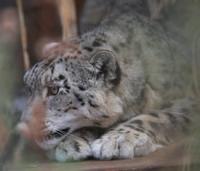
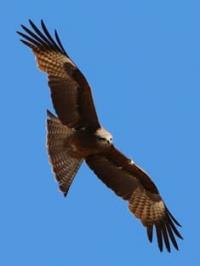
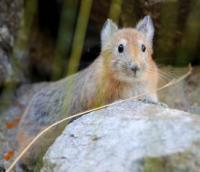
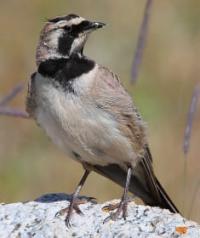
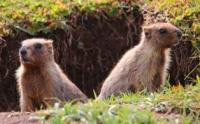
Animal tours in mountains of Central Asia.
“God created animals to warm our cold hearts.”
Animals of Central Asia.
The mountains of Central Asia belong to the great Central Asian uplift; their fauna differs well from the adjacent desert spaces by both positive and negative features. Thus, in the mountains at any significant altitude there are no many animals that are most characteristic of the Aral-Caspian desert region.
On the other hand, the vast majority of species characteristic of mountains do not even descend into the foothills. There are relatively few exceptions, that is, animals that are widespread throughout Central Asia, both lowland and mountainous.
These include: wolf, fox, tolai, mole vole, gray hamster. Among the animals that are widespread in the mountains of Central Asia, but absent in the neighboring lowlands, we can name pikas, forest dormouse, forest mice, goats, white marten, brown bear, lynx, birds - snowcocks. They are extremely characteristic and are also found in places in the lowlands.
General characteristics of fauna of mountains of Central Asia.
Although the mountains of Central Asia differ well in their fauna from the adjacent Aral-Caspian Lowland, they do not represent something integral from a faunistic point of view. Kopet-Dag in its fauna clearly gravitates towards Western Asia and Transcaucasia.
Let us turn to the mountain systems of the eastern part of Central Asia - the Pamirs, Hissar-Alai, and the Tien Shan as a whole. Their highlands with the leopard, kiik-argali, dark-bellied snowcock (all of which are absent in Kopet-Dag) and a number of other characteristic animals and birds are nothing more than the western outpost of the mountain fauna of Inner Asia.
But already below, in the belt of woody vegetation, the influence of other faunas, well different from the Central Asian one, is felt. From the north, through the spruce forests of the Dzhungar Alatau and Eastern Tien Shan, there come here, although separate, but typical representatives of taiga Siberia, such as the three-toed woodpecker, nutcracker, crossbill, and hawk owl.
In the Eastern Tien-Shan there are deer, black grouse, shrews, and even the mountain hare in the Dzungarian Alatau. On the contrary, from the south, through dense thickets of rose hips, honeysuckle, hawthorn, through deciduous tree plantations, in particular through walnut forests, Indo-Malayan representatives of subtropical forests penetrate far to the north, such as: long-tailed with a black-blue crested head the paradise flycatcher and the bright Indian oriole, while from the southwest along the same biotopes there are characteristic forms of European broad-leaved forests, for example, the forest dormouse, extending to the north even beyond the borders of Central Asia.
Even lower, on the very border of the desert foothills with their numerous oases and the mountains themselves, there are some widespread Indo-African animals. This group should also include the porcupine, penetrating to the northeast to Alma-Ata, although its vertical distribution is very wide from the desert to the level of deciduous forest inclusive.
In addition, in the lower belt of mountains, up to approximately 1600 meters above sea level, there are some true inhabitants of the lowlands, for example, the crested gerbil. Thus, the fauna of the mountains of Central Asia has an extremely mixed composition and, in contrast to the fauna of the Central Asian deserts, is devoid of an endemic core.
Although in the mountains of Central Asia there are small numbers of endemic mammals, for example, the Menzbir marmot (Talassky Alatau), the relict ground squirrel, the red marmot (only a little beyond the borders of Central Asia), there are no endemic bird species.
Overview of the main groups of animals and mountain ranges of Central Asia. Insectivores are represented very poorly - only by shrews, and shrews penetrate only into the northern part of the mountains. There are many bats, but they stick mainly to the lower zone, and their number, both in the number of species and in the number of individuals, quickly increases to the south.
The tolai hare is an animal characteristic of the entire Inner and Central Asia, where it is found from the lowlands below sea level to the highlands of the Pamirs and Tibet. It avoids forests and sticks to the mountains or river valleys overgrown with bushes, or flat open spaces where it is numerous.
The white hare, which lives only in the northeastern part of Central Asia, is also found in the Dzungarian Alatau, where it goes high into the mountains. Big-eared and red pikas are real mountain animals, living among rocky placers and rocks rich in cracks; they live at an altitude of 2000 - 3000 meters above sea level.
Lead diurnal lifestyle, in some places they are found in significant numbers, but do not form colonies. Like all pikas, they prepare supplies of dry grass for the winter, but they do not stack it in stacks, like steppe pikas, but drag it under stones.
Marmots are animals of open grassy spaces. Therefore, those species of marmots that live in the mountains (and these are the majority) cannot be called mountain animals in the full sense of the word. They need mountains only insofar as they have more or less flat areas with lush grassy vegetation, and they settle here on lawns, most often along the gentle slopes of a real alpine meadow, with thick but short grass.
In the upper belt of the mountains of Central Asia, in particular along the Tien Shan syrts and the wide flat valleys of the Pamirs, there are many places that meet the requirements of these animals, and wherever they have not yet been exterminated by man, they are found in large numbers.
They usually live in colonies, sometimes very large, although individual burrows are always located at a certain distance from each other and are connected only by paths. Depending on the altitude at which these individuals live, marmots stay awake from four to five and a half months a year, waking up when the snow melts, falling asleep after the vegetation withers.
The three species of marmots characteristic of the mountains of Central Asia - the Altai, or gray Menzbir, and the red, or long-tailed, are close to each other and do not differ noticeably in their way of life. The first of them is distributed from the northern foothills of Altai to the Central Tien-Shan, the other two are endemic: the red one inhabits the Pamirs, the Gissar-Alai system and the Western Tien Shan and only a few extends beyond the mountainous regions in the southern part of its range, while the marmot Menzbira has an exceptionally narrow distribution area - only the westernmost part of the Tien Shan.
Marmots are of very great commercial importance in Central Asia and, together with the fox, are its main fur-trading species. The fur of the Altai (gray) marmot is valued higher than the fur of other types of marmots.
Marmots are hunted for their skin and fat, which they accumulate in the fall before hibernation; they are especially fat then. The only ground squirrel more or less widely distributed in the mountains of Central Asia is the Tien Shan, or relict.
It is not numerous almost everywhere, and its colonies are scattered at an altitude of 1500 to 2000 - 3000 meters above sea level in the Tien Shan mountains at a great distance from each other. He, like all gophers, lives in steppe areas and in all respects is a typical gopher.
Systematically, it is very close to the Central Asian ground squirrel, widely distributed throughout the treeless mountains of Inner Asia. In contrast to all the rodents discussed above, the porcupine is a representative of the southern African-Indian fauna, which has the wrong limit of its distribution in Central Asia.
It lives here along the foothills and in the lower belt of the mountains, where it settles in small colonies along ravines and rocky gorges, usually densely overgrown with bushes. It does not hibernate in the winter, but is inactive during the cold season.
Leads a nocturnal lifestyle. It feeds on a variety of plant foods and in some places causes serious damage to agricultural crops, mainly melons. The forest dormouse is the only dormouse in the mountains of Central Asia, where it inhabits mainly the belt of deciduous forest. It lives mainly in bushes and gardens, through which it descends into the foothills.
Turkestan, a rat that inhabits India, Afghanistan and Central Asia, in the mountains of Central Asia is distributed over a small area - in the region of the Western Tien Shan and the Gissar Range. Here it lives in the wild in broad-leaved forests, mainly walnut trees, and in some places is very numerous.
It feeds on a variety of foods, in particular nuts, which it collects in hollows. Following the man, in whose settlements this rat replaces the pasyuk and the black rat in Central Asia, it descends into the foothills and rises high into the mountains.
The most characteristic ungulates of the mountains of Central Asia are the kiik goat and the argali ram. Kiik, or tek, better known under the unfortunate name of the Siberian goat, it is better to call it Central Asian, since it is widespread in the mountains of Inner Asia, and its range describes a semi-ring, stretching across the Himalayas, the mountains of Central Asia, Altai and Sayan Mountains). Kiik is a real mountain animal, strictly adhering to the rocks, from which it never strays far.
He climbs them with exceptional dexterity, clinging with his hooves to the most insignificant ledges of almost vertical cliffs and, in case of danger, easily gallops along inaccessible steeps. Even a two-day-old kid is able to follow its mother through such places.
It inhabits a belt in Central Asia from 2500 to 4500 meters above sea level (approximately from the border of the forest, which it sometimes enters, especially in winter, to the line of eternal snow).
Usually lives in small herds. In contrast to goats, rams are mainly inhabitants of open areas of mountains with smooth relief.
They are especially numerous in the high mountain steppes Pamir and Tien Shan, but live at low altitudes along the ridges of Central Kazakhstan, in some places along the foothills extending far into the desert, and even on insignificant elevated areas of the inner Kyzylkum.
These herd animals need mountains primarily as pastures, where they find their favorite food - various types of cereals and sedges, and in winter wormwood, for which they descend somewhat lower at this time of year, to places less snowy.
Two other ruminants, generally quite widespread in the mountains of Central Asia, are the roe deer and the deer (the latter has been greatly exterminated) - not mountain animals, but forest animals. They are connected with the mountains only insofar as in Central Asia the forest is mainly confined to the mountains.
Very close to the deer, the so-called Bukhara deer is still found in the large tugai forests of the Amu Darya, where it reaches the Aral Sea itself, and recently was also found in the tugai forests of the lower reaches of the Syr Darya, and the roe deer is found not only in the tugai forests of Semirechye, but in some places found in pure reed thickets of the foothills.
The wild boar makes other demands on the environment. It needs close proximity to water, requires closed spaces and does not tolerate any deep snow. In this regard, it is distributed in Central Asia through swampy tugai-reed thickets of the entire lowland and in the forest level of the mountains, where, depending on the availability of food and the depth of the snow cover, it makes seasonal migrations: in winter it descends to less snowy areas, in summer, as burning out of vegetation, rises high into the mountains, and closer to autumn it moves either into wild apple tree plantations, then migrates to corn crops, or the bulk moves by the time the walnuts ripen into walnut forests.
All these ungulates belong to game animals hunted for meat. Of these, the wild boar is especially important, it is very numerous in Central Asia, where its extraction in some places is in the nature of a real trade. The same can be said about the argali in the Pamirs; where their number is especially large.
The species composition of carnivores inhabiting the mountainous regions of Central Asia is very different from that of its lowlands. Nevertheless, a number of species are common: these are the light polecat, wolf, fox, badger, weasel, spotted cat.
The brown bear, lynx and white marten, which are completely absent in lowland Central Asia, are widespread in its mountains. These animals are found here not only in forests, but also in gorges devoid of tree vegetation, among rocks, etc., and rise high into the mountains.
And yet these animals, at least the bear and the lynx, cannot even be called mountain-forest animals, since most of their range lies in the lowland areas. Another thing is the leopard, wholly associated with the mountains, more precisely, with the highlands, and only in winter he descends somewhat lower, following his main prey - mountain goats and snowcocks.
In summer, it stays in the alpine zone, often on the line of eternal snow. Although the leopard is similar in appearance to a leopard, it differs from it in its long, fluffy tail, skull structure, relatively short legs and is covered with long, whitish fur.
This fur makes it unnoticeable in the snow and protects the animal from night frosts (typical of its harsh homeland) and at the height of summer. he avifauna of the mountains of Central Asia, taken as a whole, is very rich and extremely diverse.
We will indicate some of its representatives, especially characteristic of the main biotopes dual to the mountains of Central Asia. or broad-leaved forests, which are generally very rich in life, the oriole, blackbird, grosbeak, and greenfinch are especially typical.
All of the listed species are also characteristic of the broad-leaved forests of Europe, the Caucasus, and Asia Minor. However, in Central Asia. most of them are represented by sharply distinct subspecies, for example, the Indian oriole and the Indian grosbeak.
The spruce-fir forest, fully developed only in the northeastern half of the mountainous region under consideration, contains a number of birds common to the Siberian taiga. For thickets of tree-like juniper - juniper, which make up the upper tree belt in all the mountains of Central Asia: the juniper grosbeak is especially characteristic.
This is an excellent example of a stenobiont bird: it is entirely associated with juniper, the berries of which are its main food. On the other hand, the stone partridge or chukar, the most typical bird of large-stony placers; it is found in suitable places in all belts, starting from the foot; and to the line of eternal snow.
Even in small rocky hills located in the depths of the desert, if there is a stream nearby, chukar often lives. No less characteristic of stormy mountain rivers is the dipper - a dense bird, a larger one - a sparrow; having the ability to dive into a foamy stream and look for its food at the bottom.
In contrast to dippers, which are widespread within the Holarctic, the bluebird, associated with the rivers of the lower and middle zones of the mountains, is a South Asian species found in Central Asia (for which it is extremely characteristic); the northwestern limit of its distribution. If the chukar, the dipper and partly the bluebird are not confined to certain mountain zones, then the snowcocks are a good example of the opposite phenomenon: these birds are characteristic exclusively of the highlands, where they stay along the alpine lawns in close proximity to the eternal snow.
They belong to the same biocenosis as mountain goats; leopards, alpine jackdaws, and partly argali and constantly stay together with goats or argali - in the summer pecking out insects from their dung, and in the winter, taking advantage of the fact that these ungulates clear the snow and thereby make it easier for themselves and the snowcocks to obtain food.
The mountains are poor in reptiles. Only certain species, mainly snakes, rise from the lowlands to more or less significant heights. Nevertheless, the mountains of Central Asia are home to several true mountain species.
These are stellions - large, agamas that live among the rocks; low-mountain stage of the southern part of the country, ocellated foot-and-mouth disease, living at an altitude of 1500 to 3000 meters above sea level in the Tien-Shan, and Alai hologeyes, which have approximately the same distribution, and also go to the mountains up to an altitude of 3000 meters above sea level.
It is worthy of attention that the last two lizards, in contrast to all other representatives of foot-and-mouth lizards and gologles, give birth to live young. This expresses their adaptation to the cold climate of the highlands: being heat-loving animals, they constantly look for places more heated by the sun, thus warming not only themselves, but also the embryos contained in them.
Let us point out the faunal differences between individual mountain systems of Central Asia. The fauna of the Pamirs (except for its western deeply dissected part, which is landscaped and faunistically related to the Gissar-Alai), this monotonous high-mountain desert, is very poor in its species composition, but a number of animals are found in large numbers of individuals.
These include some high-mountain voles, red marmots, argali, and the tolai hare. Common foxes, wolves, and bears are common. In general, the fauna is especially close to the mountainous Asian fauna, the center of which is Tibet, and contains, despite its poverty, several typical Tibetan species not found anywhere else in Central Asia.
Of these, first of all, we should name the relatively small Tibetan snowcock, which lives here along with the dark-bellied snowcock, but stays even higher, and the very large Tibetan saja. The large, long-haired form of the local wolf also belongs to the Tibetan subspecies.
Such faunal similarities with Tibet are quite understandable, given the similarity of the landscapes of both these high-mountainous countries and their geographical proximity. The Eastern Tien Shan includes the Dzungarian Alatau and the entire Tien-Shan system to the west approximately to the middle of the Kyrgyz ridge and the high-mountainous parts of the Fergana.
This is a country of huge ranges and highest highlands. Its characteristic feature is the dense spruce and spruce-fir forests growing in the middle zone of the mountains. Above them are high-mountainous dry steppes, and even higher, to the southeast of Lake Issyk-Kul, are the Hungry Deserts, known under the name syrtov.
They have a great landscape similarity with the Pamirs and faunistically in many respects gravitate towards it and the highlands of Central Asia. Coniferous forests, as already indicated, reveal in their fauna some imprint of taiga Siberia, although, of course, the fauna is mainly Central Asian.
The eastern Tien Shan is especially rich in large animals - roe deer, wild boars, mountain goats, argali, and lynxes. The 3rd Western Tien-Shan includes the western half of the Kyrgyz ridge and the entire Talas Alatau system, as well as the western slopes of the Fergana ridge, the northern low areas of the Alai and eastern parts Turkestan ranges.
The Western Tien Shan has a fauna of a transitional nature between the Eastern Tien Shan and the Gissar-Alai, although closer to the latter. There is already a red marmot here, not a gray one, in the walnut forests so characteristic of the Western Tien-Shan, the number of “southerners” is increasing, in particular there is a paradise flycatcher and a Turkestan rat, collecting walnut reserves; There is also an endemic - Menzbir's marmot.
Gys aro - Alai faunistically covers, in addition to the systems of the same name, almost the entire Turkestan ridge and the western outskirts of the Pamirs, where typical “southerners”, completely alien to the indigenous Pamirs, penetrate through numerous deep gorges with tree and shrub vegetation.
There is already a very significant admixture of Indo-Himalayan species (especially among birds), and some southwestern elements are also present. All these properties are especially pronounced on the southern slopes of the Gissar system, which is easily explained by their southern position and relatively low mountains.
Of the mammals, only the mark-horned goat is found here, the center of distribution of which lies in northwestern India and Afghanistan. It lives in the middle forest belt of the mountains among rocks covered with trees and shrubs.
In the foothill tugai along the Vakhsh and Pyanj lives the Bukhara deer, penetrating along the Amu Darya all the way to the Aral Sea. While the argali live in the mountains of the northern part of this area, the Central Asian mouflon, close to the Kopetdag ram, lives in the south.
A completely different fauna inhabits the low one; deserted Kopet-Dag, nowhere rising to the line of eternal snow and overgrown with tree and shrub vegetation only in gorges where there is water. There are no marmots, no red and large pika, no argali, no kiik, no leopard, no dark-bellied snowcock, nor bluebird, i.e. a whole range of animals widely distributed in the mountains of the eastern part of Central Asia.
But here you can find the reddish pika, the bezoar goat, the leopard, the Caucasian form of the red deer, the Central Asian snowcock, and the Caucasian mountain agama. Thus, although on Kopet-Dag there are a number of widespread Central Asian species, for example: tolai hare, juniper oak-nosed and a number of forms common with the Gissar ridge; such as: mountain partridge, Central Asian mouflon, spectacled snake, which are absent in Transcaucasia, but in general the faunas of Kopet-Dag and Transcaucasia are close.
Consequently, if the hot, dry lowlands along the Kura and Araks represent Central Asian deserts, as it were, wedged into Transcaucasia, then Kopet-Dag, connected to Transcaucasia by the wooded Elburz, can be considered in faunal terms as the eastern continuation of mountainous Transcaucasia.
Authority:
Nikolai Alekseevich Bobrinsky and Nikolai Alekseevich Gladkov "Geography of Animals". 1961.
Photos by:
Alexander Petrov.







